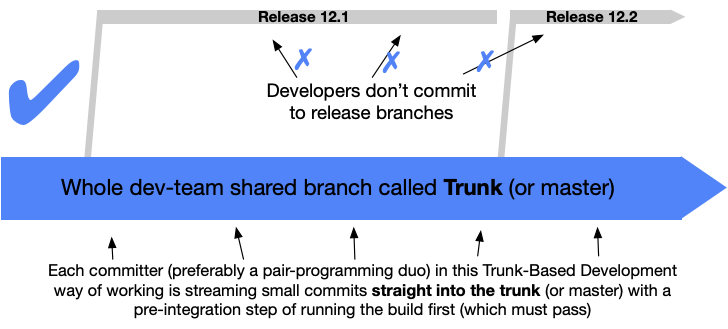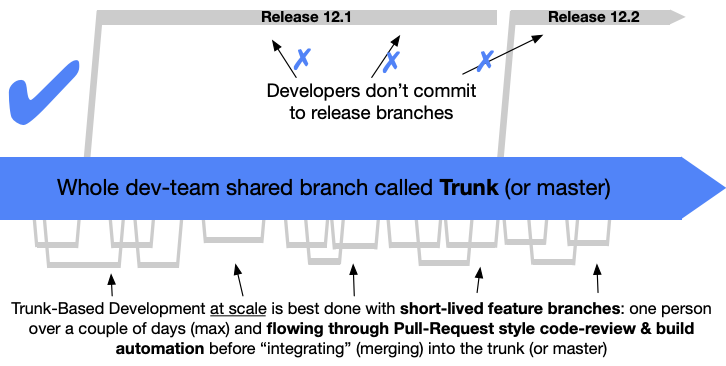Second diagram, yes absolutely.
Short lived (1-2 day) branches, and a strong CI systems to catch regressions.
Be warned, the strength in the CI lies in its capacity to detect when some functionality that previously worked doesn't work anymore. So, the flow must be green always, and it must evolve as the features evolve. Without good CI you're destined for failure.


